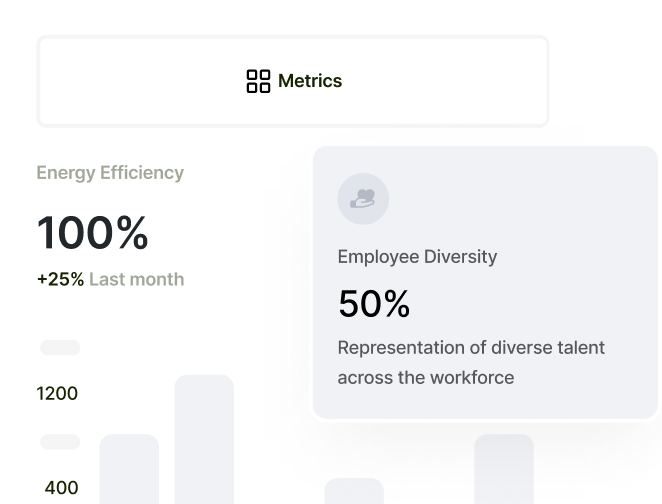관심 있으신가요? 지금 문의하세요
문의하려면 오른쪽 폼을 작성하시거나 아래 이메일 주소로 연락 주십시오.
sales@senecaesg.com
In 2025, the 글로벌 보고 이니셔티브(GRI) advanced a major evolution in global climate disclosure. Through a series of interconnected initiatives, including the launch of GRI 102: Climate Change, GRI 103: Energy에서 Integrity Matters Checklist, a machine-readable Sustainability Taxonomy, and a new GRI–CDP mapping, GRI is reinforcing the integrity of corporate climate commitments, supporting science-aligned transition planning, and modernising the architecture of sustainability reporting.
As expectations for credible climate action intensify ahead of COP30 {Conference of the Parties (COP): Global Climate Governance and the Road to COP30}, GRI’s enhanced suite of tools strengthens the foundation for transparent, decision-useful and globally interoperable climate reporting. The developments also respond to growing pressure from investors, policymakers and civil society for companies to substantiate their net-zero promises with actionable and measurable plans.
GRI’s updated standards, GRI 102: Climate Change 2025 그리고 GRI 103: Energy 2025, were formally launched in June 2025 and are designed to deliver clearer, more comprehensive climate and energy reporting aligned with international science-based expectations [4].
GRI 102 places the organisation’s primary mitigation responsibility squarely on substantial reductions in greenhouse gas (GHG) emissions, reflecting the scientific consensus that credible climate action begins with deep, real-world emissions cuts [4].
The standard requires disclosures that explore:
GRI emphasises the human dimension of climate change, noting that transparency on social impacts is essential to understanding risks, opportunities and the fairness of transition pathways.
The companion GRI 103: Energy standard expands reporting on:
Together, GRI 102 and 103 provide a science-aligned climate and energy disclosure system that supports broader global goals, including the Paris Agreement’s temperature limits.
Both standards are:
A newly published joint statement confirms that organisations may use a single set of GHG emissions disclosures aligned with IFRS S2 to meet GRI 102 requirements, provided the underlying emissions are measured under the GHG Protocol and cross-referenced appropriately [7]. This means companies can report Scope 1, 2 and 3 emissions once, satisfying both investor-focused and stakeholder-focused requirements simultaneously.
One of the most influential developments of 2025 is the launch of the Integrity Matters Checklist, created by GRI in partnership with the United Nations to help organisations align climate reporting with the UN’s expectations for credible net-zero commitments [1][2][3].
The checklist provides a clear mapping between:
It guides organisations on how to report:
The UN Secretary-General created the HLEG to address widespread concerns about the quality and credibility of net-zero pledges from companies, investors, cities and regions [1][3]. Despite growth in corporate net-zero targets across all regions in the last year, the integrity of those targets “remains a significant issue,” according to Catherine McKenna, Chair of the HLEG [1][2][3].
Senior UN officials highlight the importance of the new checklist:
Because the checklist is fully aligned with GRI 102: Climate Change, organisations using the GRI Standards are already equipped to report on all HLEG recommendations, making GRI a direct mechanism for operationalising the UN’s climate integrity framework [1][2][3].
In 2025, GRI launched its Sustainability Taxonomy, an XBRL-based digital framework that converts the entire GRI Standards system into machine-readable format [6]. This marks a major step forward in the digitalisation of sustainability reporting.
The taxonomy:
XBRL International’s CEO described the taxonomy as a milestone that increases the “trustworthiness and accessibility” of information disclosed using the GRI Standards [6].
To accelerate adoption:
Digital transformation is also becoming increasingly important in the context of broader national and regional shifts toward mandatory digital sustainability reporting.
Another major milestone of 2025 is the release of a GRI–CDP mapping tool that aligns CDP’s 2025 corporate questionnaire with GRI 102 and 103 [5].
This mapping:
The initiative builds on a 2023 Memorandum of Understanding and responds to demand from companies using GRI’s Climate Change, Energy and Biodiversity Standards who sought clearer cross-framework guidance [5].
With:
the mapping’s impact on reducing reporting burden is significant [5].
Taken together, GRI’s 2025 developments represent one of the most comprehensive upgrades to global climate reporting in recent years.
Provide science-aligned disclosure requirements covering climate impacts, mitigation, transition plans and energy use [4].
Links GRI to the UN’s expectations for net-zero integrity, helping companies align commitments with science-based pathways and report on real progress [1][2][3].
Enables a single set of GHG disclosures to satisfy both GRI and IFRS S2 requirements, improving efficiency and reducing duplication [7].
Modernises sustainability reporting through XBRL, enhancing comparability, accessibility and digital analysis [6].
Reduces administrative burden and strengthens consistency across two of the most widely used environmental reporting systems [5].
Collectively, these tools help companies deliver credible, transparent and actionable climate reporting that meets the expectations of regulators, investors and civil society.
출처
[1] GRI. GRI Launches New Tool for Corporate Climate Action. https://www.globalreporting.org/news/news-center/gri-launches-new-tool-for-corporate-climate-action/
[2] ESG Today. GRI Launches New Tool to Align Climate Reporting with UN Net Zero Guidance. https://www.esgtoday.com/gri-launches-new-tool-to-align-climate-reporting-with-un-net-zero-guidance/
[3] ESG Post. New UN–GRI Checklist Strengthens Corporate Net Zero Reporting. https://esgpost.com/new-un-gri-checklist-strengthens-corporate-net-zero-reporting/
[4] GRI. New Climate Standards Can Unlock Actionable and Streamlined Reporting on Impacts. https://www.globalreporting.org/news/news-center/new-climate-standards-can-unlock-actionable-and-streamlined-reporting-on-impacts/
[5] GRI. Closer Connections for Better Climate Disclosure. https://www.globalreporting.org/news/news-center/closer-connections-for-better-climate-disclosure/
[6] ESG News. GRI Launches Machine-Readable Taxonomy to Streamline Global Sustainability Reporting. https://esgnews.com/gri-launches-machine-readable-taxonomy-to-streamline-global-sustainability-reporting/
[7] IFRS Foundation. GRI 102 and IFRS S2—Reporting on Both Standards and Equivalence for IFRS S2 on GHG Emissions Disclosures. https://www.ifrs.org/news-and-events/news/2025/06/gri-102-ifrs-s2-reporting-and-equivalence/
포트폴리오의 ESG 성과를 모니터링하고, 나만의 ESG 프레임워크를 만들며, 더 나은 비즈니스 의사결정을 내리세요.

문의하려면 오른쪽 폼을 작성하시거나 아래 이메일 주소로 연락 주십시오.
sales@senecaesg.com7 Straits View, Marina One East Tower, #05-01, Singapore 018936
+(65) 6223 8888
Gustav Mahlerplein 2 Amsterdam, Netherlands 1082 MA
(+31) 6 4817 3634
77 Dunhua South Road, 7F Section 2, Da'an District Taipei City, Taiwan 106414
(+886) 02 2706 2108
Viet Tower 1, Thai Ha, Dong Da Hanoi, Vietnam 100000
(+84) 936 075 490
Av. Santo Toribio 143,
San Isidro, Lima, Peru, 15073
(+51) 951 722 377
1-4-20 Nishikicho, Tachikawa City, Tokyo 190-0022